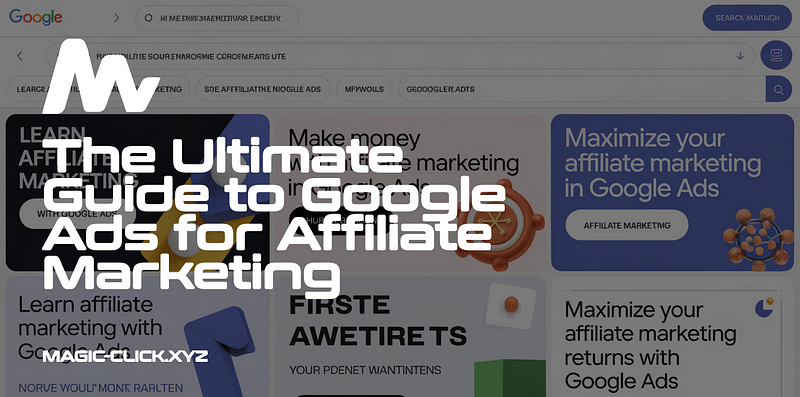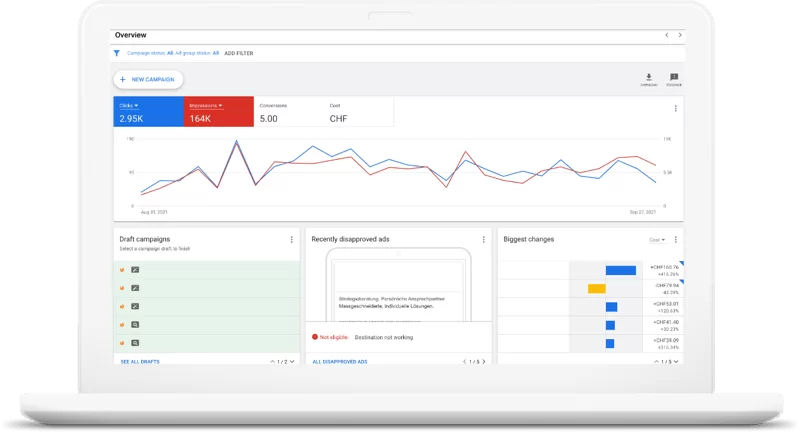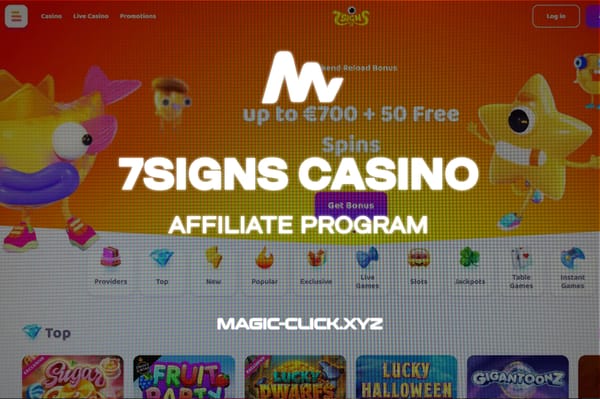The Ultimate Guide to Google Ads for Affiliate Marketing
Google Ads is one of the most powerful tools available for affiliate marketers looking to drive targeted traffic and boost conversions…

Google Ads is one of the most powerful tools available for affiliate marketers looking to drive targeted traffic and boost conversions. Whether you’re a beginner or an experienced marketer, this comprehensive guide will walk you through everything you need to know to effectively use Google Ads for affiliate marketing.

⠀ Magic Click Partners — Reliable CPA network with over 1000 offers in ⠀⠀⠀⠀⠀⠀⠀⠀iGaming and Betting verticals from direct advertisers.

Why Use Google Ads for Affiliate Marketing?
Google Ads offers a massive reach, with billions of searches happening daily. It allows affiliate marketers to display ads on the Google search results page, YouTube, and partner websites within the Google Display Network. By targeting specific keywords, demographics, and behaviors, you can ensure your ads are shown to a highly relevant audience, increasing the chances of clicks and conversions.
Key Benefits of Using Google Ads for Affiliate Marketing:
- Highly Targeted Audience — With advanced targeting options such as keyword targeting, geographic targeting, and interest-based targeting, Google Ads ensures that your ads are shown to users who are most likely to engage.
- Scalable Campaigns — You can scale your campaigns quickly, reaching more potential customers and optimizing your ads to increase return on investment (ROI).
- Pay-Per-Click (PPC) Model — Google Ads operates on a PPC model, meaning you only pay when someone clicks on your ad, making it cost-effective for affiliate marketers.
Step 1: Setting Up Your Google Ads Account
Before diving into the specifics, you’ll need to create a Google Ads account. Here’s a simple step-by-step guide:
- Visit Google Ads and sign up using your Google account.
- Choose your campaign type (Search, Display, Shopping, Video, etc.). For affiliate marketing, search campaigns and display campaigns are the most popular.
- Set up billing information and configure your account settings.

Step 2: Keyword Research for Google Ads Campaigns
Keyword research is the foundation of any successful Google Ads campaign. For affiliate marketers, finding the right keywords is crucial to attracting the right audience.
- Use Google Keyword Planner — Google’s built-in tool helps you discover relevant keywords and understand search volumes, competition, and cost-per-click (CPC).
- Long-Tail Keywords — Focus on long-tail keywords (e.g., “best weight loss supplements for men 2024”) as they have lower competition and are more likely to convert.
- Competitor Research — Analyze what keywords your competitors are bidding on using tools like SEMrush or SpyFu. This can provide valuable insights.
Step 3: Crafting Your Google Ads for Affiliate Marketing
Your ad copy is crucial for attracting clicks and driving conversions. When writing ads for affiliate marketing, keep these tips in mind:
- Highlight the Benefits — Focus on the benefits of the product or service you’re promoting, not just the features.
- Create Urgency — Phrases like “limited-time offer” or “only a few left” can encourage users to act quickly.
- Use Ad Extensions — Make your ads more compelling with site link extensions, callout extensions, and structured snippet extensions.
Example:
- Headline 1: “Lose Weight Fast — Top Supplement of 2024”
- Headline 2: “Try It Today — 50% Off Your First Purchase!”
- Description: “Discover the best weight loss supplement. Limited time offer! Click here to learn more.”
Step 4: Optimizing Your Google Ads Campaign for Affiliate Marketing
To maximize ROI, continuous optimization is key. Here are some tips for optimizing your Google Ads campaigns:
- A/B Testing — Run multiple versions of your ads to see which performs best. Test headlines, descriptions, and even landing pages.
- Negative Keywords — Use negative keywords to filter out irrelevant traffic. For example, if you’re promoting a premium product, you can exclude terms like “free” or “cheap.”
- Conversion Tracking — Set up conversion tracking to measure how many clicks are turning into sales or leads. This will help you assess which keywords and ads are the most effective.
Step 5: Scaling Your Google Ads Campaign
Once your campaigns are generating consistent results, it’s time to scale. Here’s how:
- Increase Budget — Gradually increase your budget for the top-performing campaigns, but always monitor your cost-per-conversion.
- Expand Keywords — Add more high-converting keywords to your campaigns. Use tools like Google’s Keyword Planner to discover new opportunities.
- Use Automated Bidding — Google’s automated bidding strategies, like Target CPA or Target ROAS, can help you scale your campaigns more effectively.
Step 6: Analyzing Results and Reporting
Google Ads offers powerful analytics tools to help you understand the performance of your campaigns. Key metrics to monitor include:
- Click-Through Rate (CTR) — The percentage of people who click on your ad after seeing it. A high CTR indicates your ads are relevant to the audience.
- Cost-Per-Click (CPC) — The amount you pay for each click on your ad. Lowering your CPC can help improve your ROI.
- Conversion Rate — The percentage of visitors who take the desired action (e.g., making a purchase or signing up). Aim to improve this through continuous optimization.
Conclusion
Google Ads is an essential tool for affiliate marketers looking to drive traffic, increase conversions, and scale their affiliate campaigns. By targeting the right audience, using effective ad copy, and continuously optimizing your campaigns, you can maximize your affiliate marketing earnings.
Start implementing these strategies today, and watch your affiliate marketing efforts thrive!





